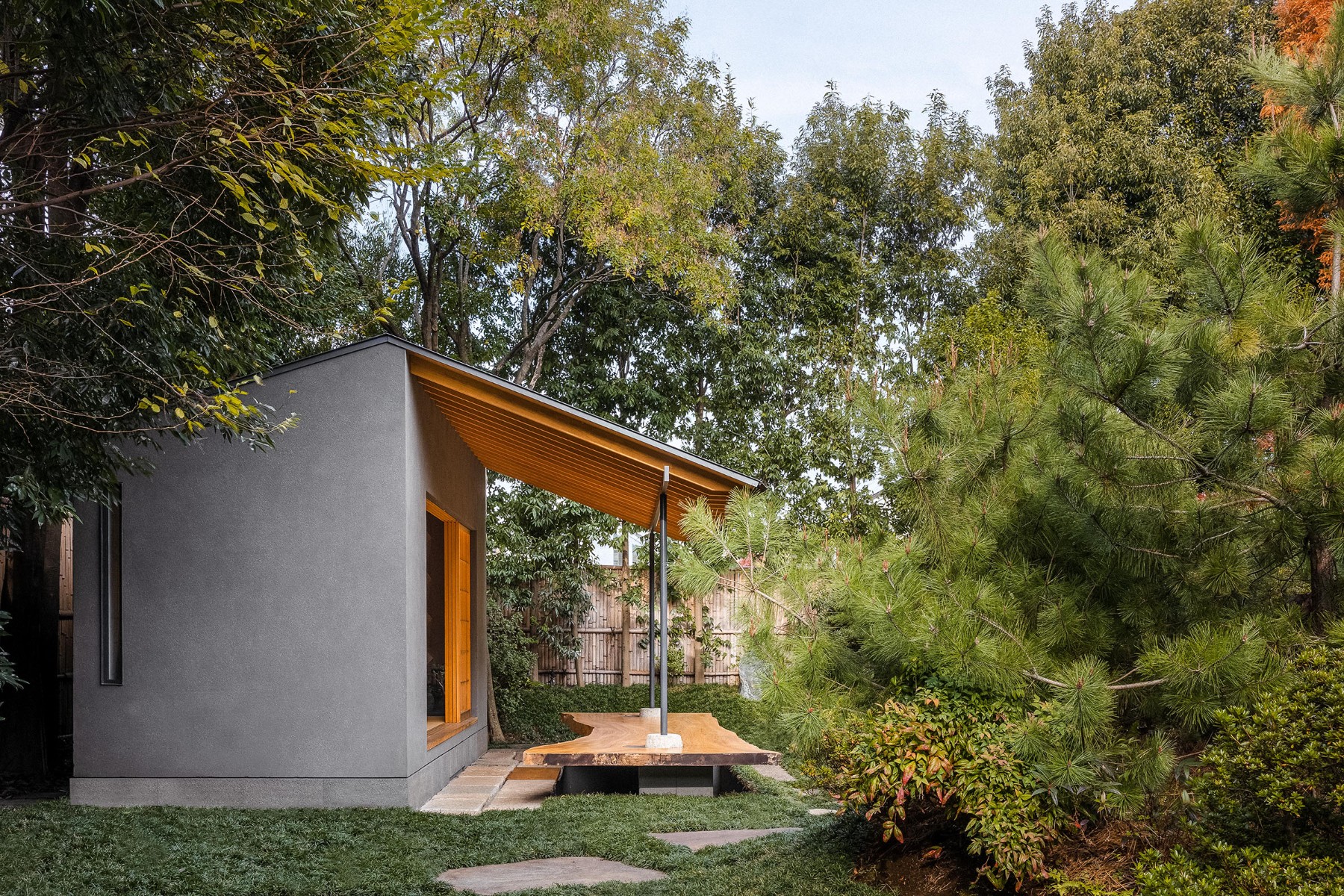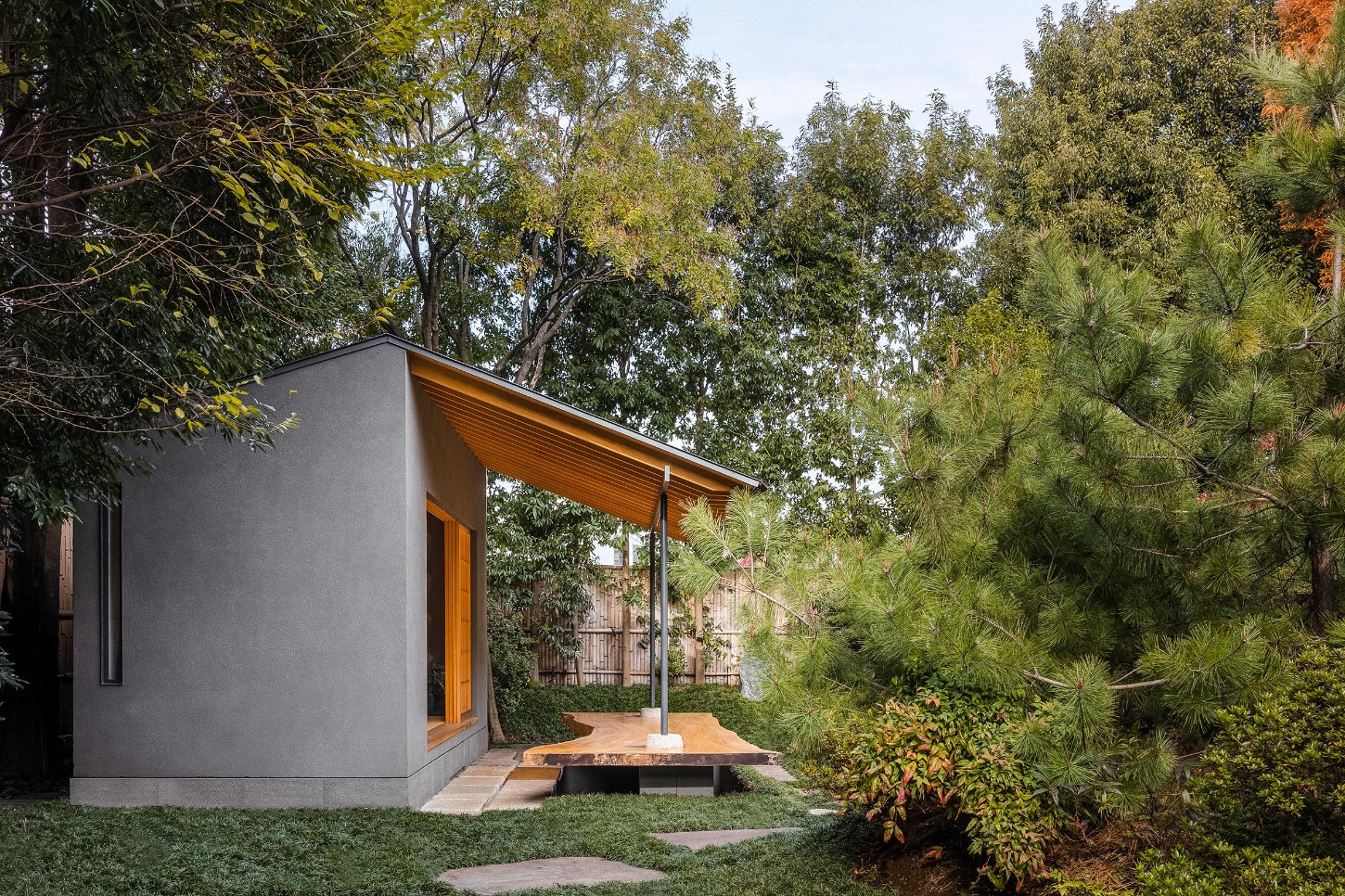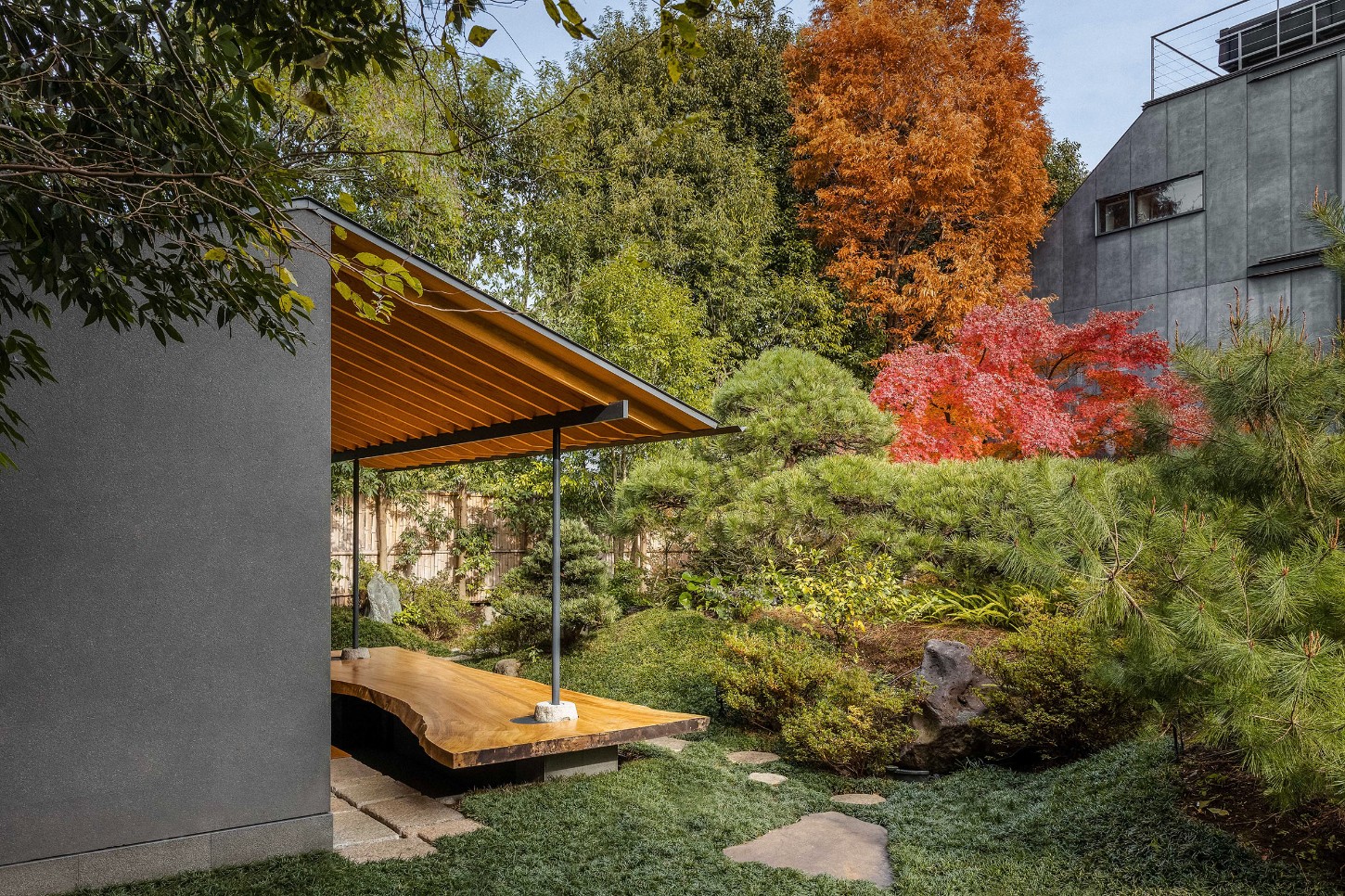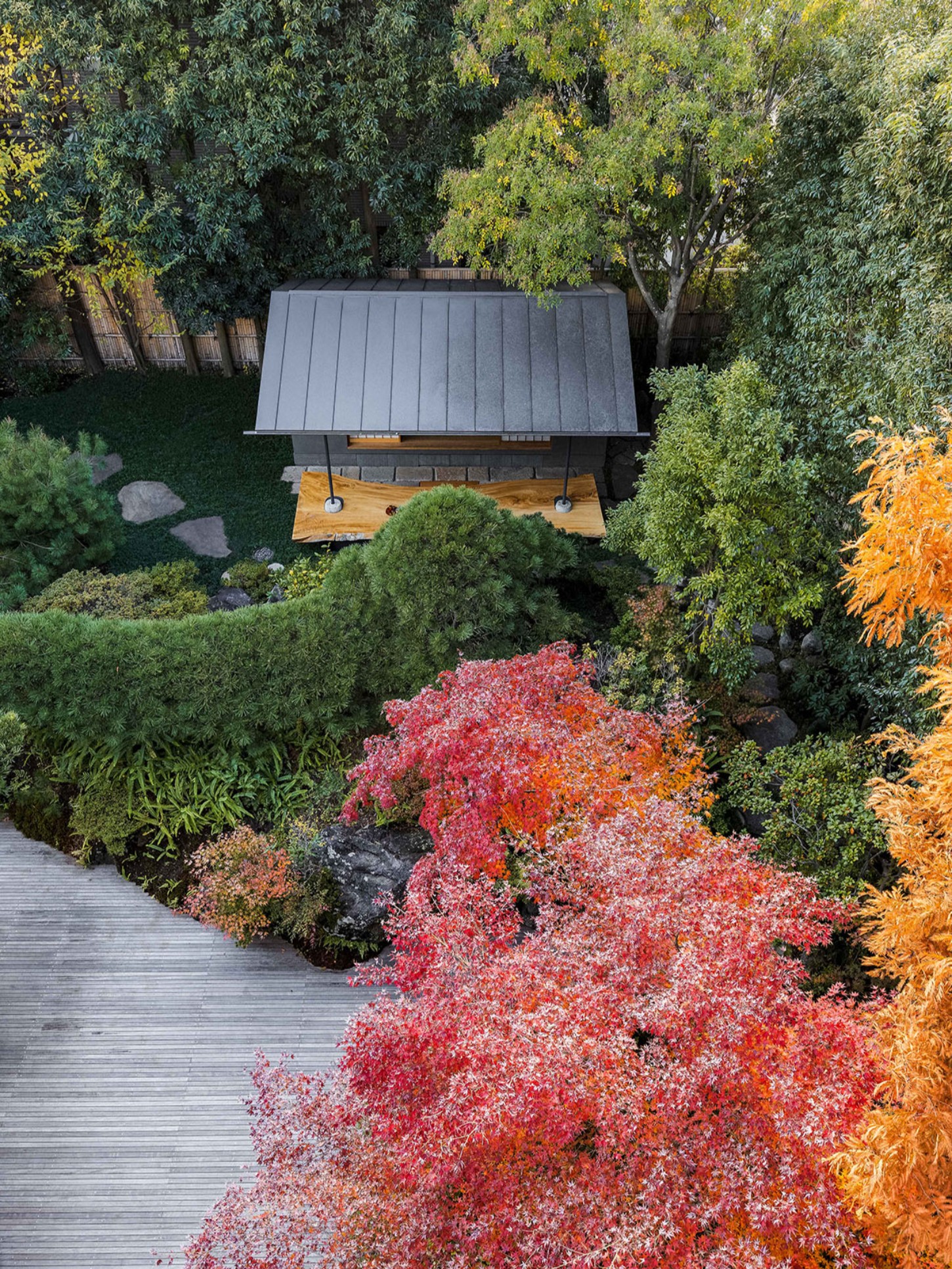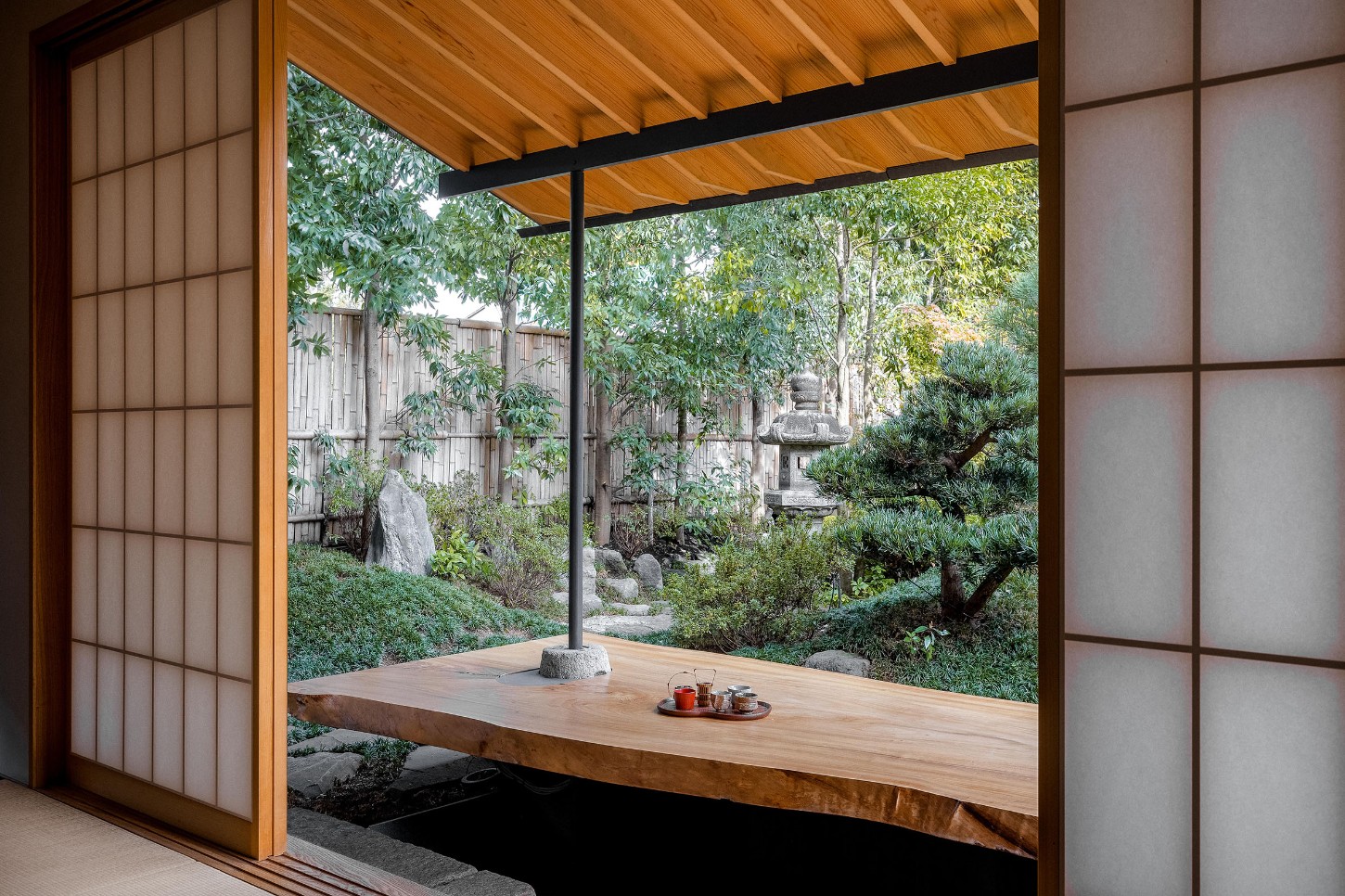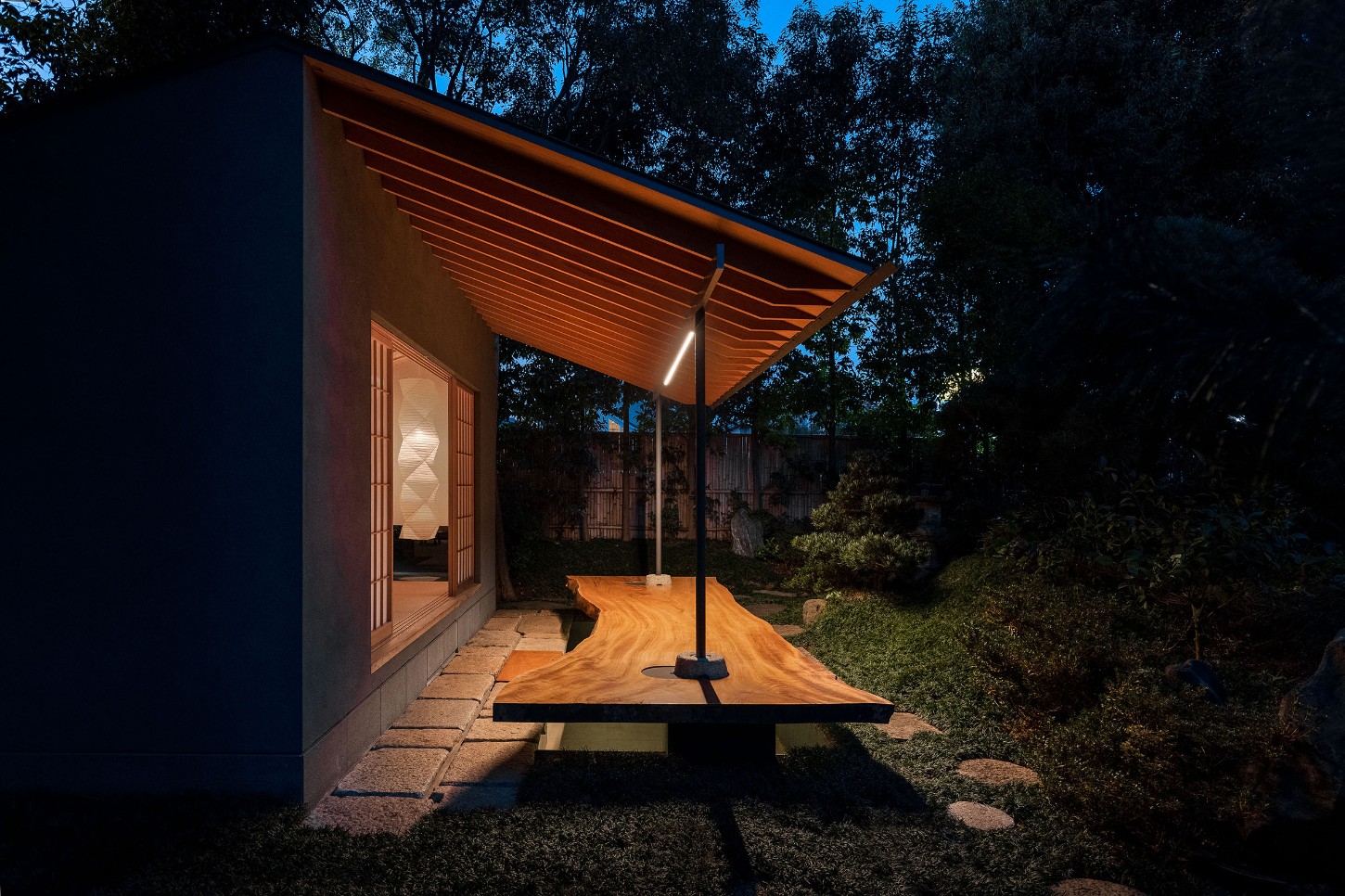Keiji Ashizawa’s Garden House is less an addition than an attunement: a hut of four tatami mats and a tokonoma alcove, resting modestly at the edge of House S. Its presence reshapes the rhythm of the garden—not by imposing, but by amplifying what was already there, allowing the house and landscape to converse through a new lens.
What does it mean to create a place within a place? A room that does not compete with its surroundings but dissolves quietly into them. At its heart lies a single piece of camphor wood, purchased by the client out of affection, folded into the design as both bench and table. Its sunken kotatsu-like form encourages intimacy: a place to gather, to share a meal, or simply to rest in stillness. Above it, a steel roof hovers in delicate alignment with house and garden, its precision softened by memory. The frame is grounded not by new materials but by stones once used for weighing down pickles at the client’s family home in Kyoto, transforming a humble domestic object into a carrier of history.
The Garden House is compact, yet it holds multiple layers—past and present, structure and landscape, ritual and chance encounter. From within, the view shifts continuously: the garden seen anew, the main house reframed, the horizon compressed and expanded depending on where one sits. It is a space designed as much for looking as for being looked at, equally meaningful from the inside as from the vantage point of the garden itself.
And yet, its greatest gesture may be what it leaves unfinished. Like the garden it inhabits, it resists completion. A garden is never still; it is always unfolding, a conversation between weather, season, and time. The Garden House accepts this condition and mirrors it, not by closing itself off but by remaining open—an architecture that invites impermanence, embraces continuity, and allows life to leave its mark.
Perhaps that is the quiet lesson of Ashizawa’s design: architecture, at its most essential, is not about finality but about keeping space receptive—for change, for memory, for the shifting currents of daily life that will inevitably move through it.

